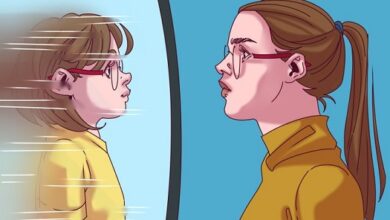Rejection wound symptoms definitoin and How to Heal It
Rejection Wound
The wound of rejection settles inside a person from certain personal experiences of rejection suffered in his relationship with certain significant people in his life. This wound usually provokes strong defense mechanisms in the affected person, which allow them to continue living with an apparent “protection” in the face of the pain suffered by rejection. In this article we will provide you the symptoms of rejection wound.
However, in most cases, the negative consequences of this wound usually end up interrupting the person’s integral development in one or more areas of his personal life.
More about the wound of rejection
The wound of rejection is the one that is caused on an emotional level within a person who has suffered a certain experience of rejection in their relationship with one or more significant people around them and who have caused great emotional pain. Even though these wounds can be caused by different people, in most cases the wound of rejection has its origin in the primary experience with the parents and is reproduced later in other types of future relationships such as the partner, friends, boss , etc.
The wound of rejection is produced, in most cases, when a child subjectively experiences rejection towards one of their parents . In fact, it is a subjective experience that can be supported by the following interpretations:
- Objective reality : mothers/fathers who really reject their children. Even so, it is worth mentioning that situations of intentional parental rejection are due to emotional, personal, psychological “deficits” on the part of parents who, without intention, prevent or make it difficult to take care of their children as they should.
- Subjective interpretation of a certain reality : for example, a mother or a father with certain difficulties who cannot correctly anticipate their children.
Rejection wound symptoms
How do I know if I have the wound of rejection? Following are the major symptoms of rejection wound.
- Fear of people and great distrust in his relationship with them.
- Personal inhibition and lack of natural expression in one or more areas of life, due to fear and distrust experienced. Find out how to overcome fear of rejection in this article.
- A more or less continuous state of alertness in personal interactions so as not to experience such an unpleasant situation again.
- Impulsivity, dependence and/or avoidance and escape to avoid possible future situations of rejection. In this article you will find information about what an impulsive person is, characteristics and how to deal with it.
- Difficulty starting personal relationships or maintaining them over time.
- Accumulated resentment that can manifest itself on certain occasions in the face of possible personal interpretations of rejection.
Consequences
The consequences generated by the wound of rejection are generally not very positive. In general, people affected by this bad experience tend, as we mentioned at the beginning of the article, to create defense mechanisms that allow them to “forget” and avoid, as much as possible, the pain that such a situation causes. The problem with these defense mechanisms is that they form “masks” that, yes, protect but limit the person’s natural, spontaneous life and joy.
Other main consequences of the wound of rejection are:
- People affected by this wound create a shell that protects them from being rejected but, at the same time, prevents them from experiencing the positive aspects of relationships with others.
- People with a fear of rejection are unable to commit to avoid possible and dreaded rejection later.
- Impulsive and, in certain cases, aggressive behavior to defend and protect oneself in the face of the irrational perception of mistrust in people.
In general, the personality of those who have the wound of rejection is based on a great distrust for human beings, a great fear of life and a great difficulty in living in a natural, happy and peaceful way in their relationships with others. In this article, we’ll delve into why people are suspicious and how to deal with them.
How to heal the wound of rejection
Healing the wound of rejection is not an easy task, especially if we take into account that it is a strong primary wound that, in the brief moment in which it occurred, leaves a strong imprint in the unconscious of the affected person.
However, with great patience, all healing of the soul is possible, as long as we incorporate and courageously put into practice the following advice to heal the wound of rejection:
- Becoming aware of how your current life is limited and does not allow you to develop fully and healthily.
- Adopt a personal attitude of change that will allow you to change the course of your life.
- Accept that most of the change lies in your own inner change.
- Objectively analyze your “inner self” to contrast the beliefs about yourself, people and the world created at the root of your rejection wound with a more current and real look at reality.
- Carry out an intense work of personal change with courage, patience and perseverance. This will allow you to classify as “lies” all the beliefs based on the experience of pain that generated the wound. In addition, it will help feed and strengthen a new look at yourself, others and a more real, beautiful and positive life.
- Strengthen the life impulse that will allow you to undertake a new life project with the person you really are and how to become.




